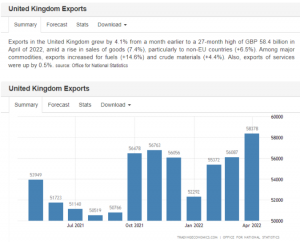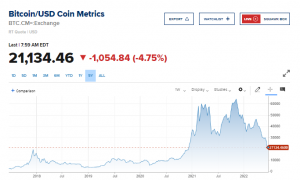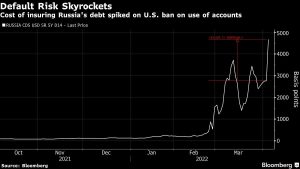
I have been writing articles about history recently, the purpose is to let everyone have a true interpretation of history, and at the same time, when dealing with future crises, use history as a mirror! Although history will not come back, but over the years, history has always been surprisingly similar.
When Greenspan was the chairman of the Federal Reserve, he said: The United States is in the midst of a “once in a century” financial crisis.
Soon after he retired, the United States suffered a financial crisis. There are many articles on the Internet about how this crisis in the United States happened, but many people said that after reading it, they felt that there was a problem, that is, they read a lot of news about the global crisis, but they are basically at a loss. .
Today we will give three answers to the financial crisis in the United States in the past:
1. How did the US subprime mortgage crisis happen?
2. How did you deal with the subprime mortgage crisis?
3. What impact did that crisis have on our China?
1. How did the subprime mortgage crisis happen?
In September 2008, Lehman Brothers, a major US investment bank, filed for bankruptcy protection due to the subprime mortgage issue. Wall Street also fell into turmoil. In just a few days, Lehman Brothers, Merrill Lynch, Fannie Mae, Freddie Mac, etc. The heroic characters have fallen one by one, and a new round of financial turmoil (subprime mortgage crisis) has begun…
Before understanding how the subprime mortgage crisis happened, let’s first understand what subprime mortgage is. The so-called subprime loans are subprime mortgage loans, which are loans granted by general financial institutions to customers who are unable to repay.
2. Why did subprime mortgages trigger the US financial crisis?
In fact, under normal circumstances, subprime mortgages cannot trigger a global financial crisis, and the main reason why the subprime mortgages launched by the United States can trigger such a big response in the past is also related to the financial structure of the United States.
Generally, when Americans apply for a housing loan, an intermediary agency must first issue an income certificate, and the intermediary agency must prove to the bank that the borrower has the ability to repay the loan before the bank lends the money to the borrower.
This kind of process is not very different from ours. The bank lends money to the borrower when it is determined that the borrower has the ability to repay.
The point is that under the unregulated financial structure of the United States, a large number of people who have insufficient credit or poor loan records in the United States have also followed suit with those who are not eligible to apply for housing loans.
When intermediaries applied for subprime loans for these people, in order to pass the approval, they began to falsify, using false data and false income certificates to deceive banks.
Using the packaging of intermediaries to deceive the bank, the bank loaned the loan to these people with lack of credit, and at the same time converted the loan into a bond, and sold it to Freddie Mac and Fannie Mae. This bond is broken down into smaller denominations and sold to ordinary investors, even to the world.
Later, the borrowers of these sub-prime loans could not repay the interest. The bank was unable to cash out Freddie Mac and Fannie Mae because they could not get the interest, and Freddie Mac and Fannie Mae could not repay the money because they could not get the money. For those people who bought subordinated debt, in this way, under the domino effect, it triggered a series of economic collapses.
It is said that the debts of Freddie Mac and Fannie Mae of the United States were actually US$5 trillion, of which US$2 trillion was sold to foreign governments and US$3 trillion was sold to the American people. Of course, in addition to the well-known subordinated debt in the United States back then, there were also subordinated debts. According to statistics, the United States had $1 trillion in subordinated debt that year.
3. Why do Americans believe in junk debt?
Back then, the United States not only created subprime mortgages, but also created a series of junk debts after subprime mortgages. But why would American people believe the bonds they sold?
The main reason is that Wall Street not only created a very gorgeous name for these junk bonds: real estate mortgage bonds, but also vowed to tell everyone that this bond is guaranteed by real estate. At that time, the proportion of real estate loans in the United States was 70%, and this junk bond was issued. The slogan of real estate guarantee is equivalent to guaranteeing 70% of debt with 100% real estate.
In order to make enough of the handling fee for selling these junk debts, Wall Street even created an unprecedented subordinated debt system.
4. The U.S. Subordinated Debt System
Under normal circumstances, only people with good credit can borrow money. What about the United States? The intermediary agency is the first step in reviewing borrowings, and is responsible for collecting materials including income certificates, tax bills, etc. that prove that they are eligible for borrowing. After the intermediary agency receives the materials, if it considers that the applicant is qualified to borrow money (of course, the intermediary agencies in the United States did not falsify the audit materials that year), they would take the information to the bank.
After the Bank of America receives the materials, it conducts a second review, and the money can be loaned to the borrower after the review is passed.
When Bank of America issued this loan, it meant that it lacked the same proportion of operating funds in its bank. Therefore, Bank of America converted the same amount of money as the loan data into bonds and sold it to Fannie Mae and Real Estate. Investment banks like the United States.
If Bank of America sells a $100,000 bond to Fannie Mae and Freddie Mac, Fannie Mae and Freddie Mac will divide it into $10,000 denomination bonds after receiving the loan bond. This is called Real estate mortgage bonds are the bonds that we said above are guaranteed by real estate.
Fannie Mae and Freddie Mac divided the 100,000 bonds into 10,000 bonds, and then sold these bonds to the US financial market. In addition to the American people, foreign governments and ordinary people can also buy them.
Of course, when Fannie Mae and Freddie Mac sell these real estate mortgage bonds, they will also provide guarantees for their bonds. To put it bluntly, they will be insured and paid. What’s interesting is that this insurance policy can still be sold on the financial market. This is the term we often hear: derivative financial instruments.
This is the financial chain behind the subprime loans issued by the United States back then. It’s hard to imagine!
The point is that among the borrowers of these subordinated debts, 20% can’t pay interest at all. Once these people stop paying interest, the entire chain of subprime loans will be passed down one by one.
When Fannie Mae and Freddie Mac failed to receive the 20% of the borrower’s interest, they could only default. After default, they could only go bankrupt. Therefore, the US government had to rescue Fannie Mae and Freddie Mac that year. Also, the insurance company AIG, which insures these subordinated debts, once the 20% cannot be paid, AIG will have systemic risks. On this point, people who understand the law of large numbers should be very clear.
The so-called law of large numbers, to put it bluntly, is that insurance companies need to have many policyholders. For example, if an insurance company has 10,000 policyholders, and if only seven or eight people need to be compensated for an accident, there is basically no problem, and the insurance company can afford it. However, if 5,000 out of 10,000 policyholders have problems, don’t think about it, the insurance company will definitely collapse immediately. This is a systemic risk.
You know, the AIG insurance company is not holding one or two American insurance policies, nor is it just the subprime mortgage insurance policies that year. If it goes bankrupt, the consequences will be unimaginable. Therefore, in addition to trying its best to save Fannie and Freddie, the US government had to save the insurance company.


